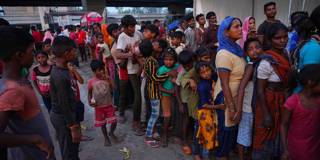While the publication of India’s first consumption figures in over a decade has generated much excitement, the official data appear to have been chosen to align with the government’s preferred narrative. In reality, poverty remains deeply entrenched in India and appears to have increased significantly.
PRINCETON – The late, sharp-witted economist Michael Mussa, my first boss at the International Monetary Fund, once told me that every statistic must pass the “smell test.” I recalled this sage advice recently when Indian authorities published the first driblets of a consumption survey in over a decade. The numbers stink.
Economists have long maintained that India’s official GDP data overstate growth. Before the September 2023 G20 summit in New Delhi, the Indian National Statistical Office issued a particularly brazen overestimate. The last decennial census was in 2011. A survey highlighting stubbornly high malnutrition and anemia cost the survey’s director his job.
The last comprehensive consumption-expenditure survey in 2012 showed 22% living in poverty. The government junked a 2018 survey when leaked data indicated an increase in the poverty rate. Not surprisingly, the new partial consumption figures generated much excitement. Hastily, Surjit Bhalla, India’s former executive director at the IMF, and economist Karan Bhasin proclaimed – under the Brookings Institution’s imprimatur – that extreme poverty has been “eliminated.”

PRINCETON – The late, sharp-witted economist Michael Mussa, my first boss at the International Monetary Fund, once told me that every statistic must pass the “smell test.” I recalled this sage advice recently when Indian authorities published the first driblets of a consumption survey in over a decade. The numbers stink.
Economists have long maintained that India’s official GDP data overstate growth. Before the September 2023 G20 summit in New Delhi, the Indian National Statistical Office issued a particularly brazen overestimate. The last decennial census was in 2011. A survey highlighting stubbornly high malnutrition and anemia cost the survey’s director his job.
The last comprehensive consumption-expenditure survey in 2012 showed 22% living in poverty. The government junked a 2018 survey when leaked data indicated an increase in the poverty rate. Not surprisingly, the new partial consumption figures generated much excitement. Hastily, Surjit Bhalla, India’s former executive director at the IMF, and economist Karan Bhasin proclaimed – under the Brookings Institution’s imprimatur – that extreme poverty has been “eliminated.”